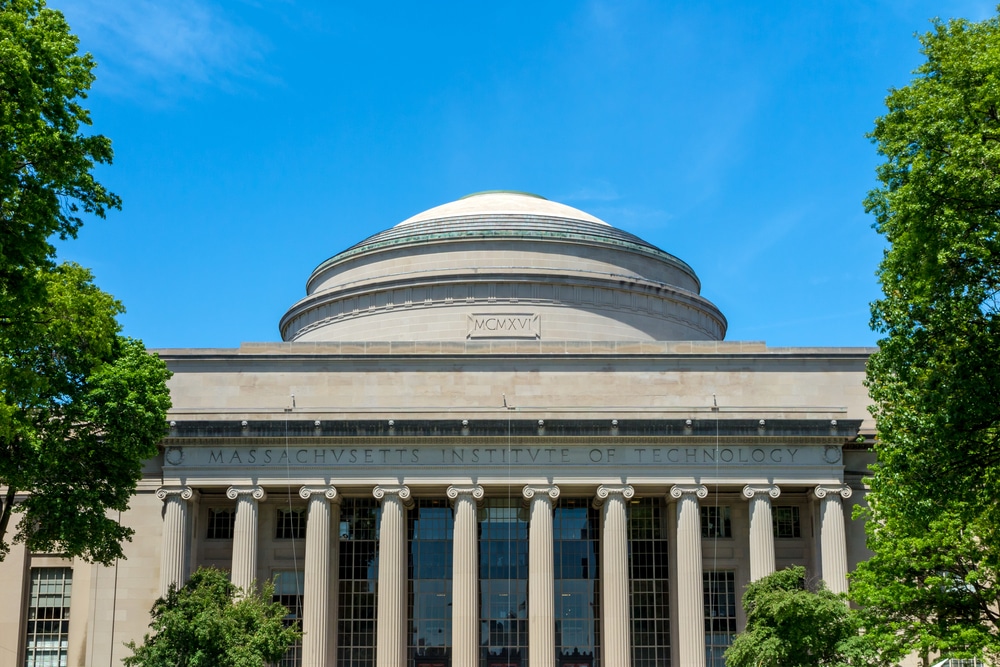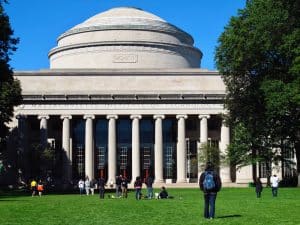Fascinating Fun Facts About MIT
Massachusetts Institute of Technology, widely known as MIT, is a name synonymous with innovation, technological advancement, and academic excellence. It is a hallowed institution that has transformed incredible minds into phenomenal lifestyles. As fascinating as its reputation is, there are also some intriguing facts about MIT that are less known but equally captivating. Let’s explore interesting facts about MIT.
Unveiling the History of MIT
Founding Facts and Early Years
MIT, the Massachusetts Institute of Technology, holds a rich history that dates back to April 10, 1861. Its establishment was a response to the growing industrialization of the United States during that time. The visionary behind its foundation was none other than William Barton Rogers, a remarkable geologist and entrepreneur. Rogers firmly believed in the practical application of scientific knowledge, and he aimed to address the intellectual demands of the Industrial Revolution through the creation of MIT.
As with any pioneering institution, the initial years of MIT were not without their fair share of challenges. Financial instability plagued the young institute, and at one point, there were discussions of a potential merger with Harvard College. However, the idea of merging with Harvard was met with vehement protests from MIT students, leading to the preservation of their separate identities.
Despite the hurdles faced, MIT persevered and continued to grow, shaping the landscape of education and research in the United States.
The Evolution of MIT’s Campus
Interestingly, the current MIT campus in Cambridge, Massachusetts, was not its original home. The Institute embarked on its journey in Boston’s Back Bay, where it occupied oversized, Victorian-style buildings that were affectionately referred to as “The Rogers Building” and “The Walker Building.” These architectural gems stood as a testament to the institute’s early years.
However, in 1916, MIT made a significant move to its present location in Cambridge. This relocation was made possible by an offer from the city, providing free land for the institute’s expansion. The move to Cambridge marked a pivotal moment in MIT’s history, as it embraced a more functional design aesthetic, aligning with the principles of the industrial era.
The new campus, often referred to as the “New Technology,” featured boxy buildings that were devoid of any ornamentation. This departure from the ornate Victorian style of the previous campus reflected the changing times and the institute’s commitment to embracing the future.
Over the years, MIT’s campus continued to evolve, adapting to the needs of its students and the advancements in technology. Today, it stands as a testament to the institute’s commitment to innovation and excellence.
The Academic Excellence of MIT
When it comes to academic excellence, MIT stands out from other universities. With its commitment to innovation and cutting-edge research, MIT offers a range of unique courses and programs that are tailored to meet the demands of the modern world.
Unique Courses and Programs
One of the standout programs at MIT is the ‘Course 6-3’: Computer Science and Engineering program. Renowned for producing excellent software engineers, this program equips students with the skills and knowledge needed to thrive in the rapidly evolving field of technology.
In addition to its renowned computer science program, MIT also offers an unexpected and exciting opportunity for students: the Pirate Certificate. Yes, you read that correctly! MIT recognizes the importance of a well-rounded education and encourages students to explore their interests beyond the traditional classroom. As part of the Pirate Certificate, students can take Archery, Pistol, Sailing, and Fencing physical education classes. This unique offering not only adds a touch of adventure to the academic experience but also fosters a sense of camaraderie among students.
Nobel Laureates and Notable Alumni
MIT’s legacy is deeply engraved in the memories of people worldwide through the remarkable achievements of its students. The institution takes great pride in its long list of Nobel laureates, which currently stands at an impressive 96. These laureates have made groundbreaking contributions not only in the fields of science and engineering but also in economics, literature, and peace. Their work has had a profound impact on society, pushing the boundaries of human knowledge and understanding.
Among MIT’s notable alumni are individuals who have left an indelible mark on the world. One such alumnus is astronaut Buzz Aldrin, who made history as part of the Apollo 11 mission, becoming one of the first humans to set foot on the moon. Another prominent figure is former UN Secretary-General Kofi Annan, whose tireless efforts in promoting peace and diplomacy earned him a Nobel Peace Prize. Additionally, MIT can proudly claim Internet pioneer Tim Berners-Lee as one of its faculty. Berners-Lee’s invention of the World Wide Web revolutionized the way we communicate and access information, shaping the modern digital age.
These are just a few examples of the exceptional individuals who have emerged from the halls of MIT, leaving an enduring impact on their respective fields and the world at large.
MIT’s Influence on Technology and Innovation
Massachusetts Institute of Technology has long been recognized as a relentless force in the world of research and innovation. Over the years, it has served as the birthplace of several groundbreaking discoveries that have shaped the course of technology and innovation.
Groundbreaking Research and Discoveries
One area where MIT has made significant contributions is in the field of technology. From advancements in radar technology to the development of inertial guidance systems, MIT has been at the forefront of pioneering research. These breakthroughs have not only revolutionized the way we navigate and communicate but have also laid the foundation for future technological advancements.
But MIT’s influence extends far beyond just technology. The institution has also played a crucial role in the realm of cybersecurity. Through its research and development efforts, MIT has contributed to the creation of innovative cybersecurity solutions, helping to protect individuals, organizations, and even nations from the ever-evolving threats in the digital landscape.
Moreover, MIT has made remarkable strides in the field of biology and life sciences. One of its notable findings includes the discovery of ‘RNA interference,’ a groundbreaking phenomenon that allows scientists to ‘silence’ certain genes. This discovery has opened up new avenues for the treatment of various diseases, offering hope for millions of people around the world.
MIT’s Role in the Tech Industry
It is impossible to talk about the tech industry without mentioning the fingerprints of MIT. The institution’s influence can be seen in the success of numerous tech giants that have been founded by MIT alumni. Companies like Intel and Qualcomm, which have revolutionized the semiconductor industry, can trace their roots back to MIT.
But it doesn’t stop there. MIT’s impact on the tech industry goes beyond individual companies. The institution has fostered a culture of innovation and entrepreneurship, leading to the creation of a vibrant ecosystem that supports thousands of startups. More than 30,000 active companies can attribute their origins to MIT, collectively generating an impressive revenue that establishes a miniature “MIT economy.”
MIT continues to be a world leader in technological research, setting the pace for tech developments and feeding the industry with innovative ideas and highly skilled professionals. Its commitment to pushing the boundaries of knowledge and its relentless pursuit of excellence ensure that its influence on technology and innovation will endure for generations to come.
The Culture and Traditions of MIT
MIT’s culture is known for its unique vibrancy and rich traditions that add a sense of excitement and camaraderie to campus life. These traditions have become an integral part of the MIT experience, shaping the identity of the institution and its students.
Unique MIT Traditions
One of the most iconic traditions at MIT is the Brass Rat, the class ring that is instantly recognizable and proudly worn by students and alumni alike. This symbol of achievement and belonging serves as a constant reminder of the bond shared by members of the MIT community.
Another notable tradition is the annual Piano Drop event. On this day, students gather to witness the spectacle of a piano being dropped from the top of a residence hall. This tradition marks the last day for students to drop classes, and the piano’s descent is a symbolic farewell to those who have decided to change their academic path. It is a lighthearted and memorable way to bid farewell to courses and embrace new opportunities.
Additionally, MIT celebrates the Independent Activities Period (IAP) in January. During this month-long period, students have the opportunity to engage in a wide range of activities outside of their regular academic pursuits. From learning to build a guitar to mastering the art of ice sculpting or creating delectable chocolate truffles, IAP offers a chance for students to explore their passions, learn new skills, and foster a sense of creativity and curiosity.
These traditions not only inject a sense of humor and creativity into MIT’s rigorous academic environment but also foster a strong sense of community and pride among students and alumni.
The Hack Culture at MIT
At MIT, the term “hack” takes on a whole new meaning. It refers to elaborate pranks or practical jokes that showcase the technical aptitude, creativity, and ingenuity of the MIT community. These hacks are not mere acts of mischief but rather expressions of the unique culture that thrives on problem-solving and pushing boundaries.
One infamous hack that has become part of MIT’s lore involved the overnight appearance of a fake cannon on campus. This playful gesture was a nod to the long-standing rivalry between MIT and Caltech, showcasing the competitive spirit and sense of humor that permeates the campus.
Another memorable hack involved an MIT police car being placed on top of the Institute’s Great Dome, leaving everyone in awe of the audacity and technical prowess of the pranksters. These hacks serve as a testament to the resourcefulness and intellectual curiosity that define the MIT community.
While these hacks may seem like simple pranks, they embody the spirit of MIT, where creativity, technical aptitude, and the drive to solve interesting problems are celebrated. They serve as a constant reminder that innovation and unconventional thinking are at the core of MIT’s culture.
Interesting Facts About MIT’s Architecture
When it comes to architecture, MIT is not your typical university. Its buildings are not just functional spaces but also works of art that reflect the institution’s innovative spirit and commitment to pushing boundaries. Let’s explore some fascinating details about MIT’s architectural wonders.
The Infinite Corridor and Other Iconic Structures
One of the most remarkable features of MIT’s campus is the Infinite Corridor. Stretching for an impressive 825 feet, this main corridor cuts laterally through several buildings, creating a seamless pathway that connects different parts of the campus. But what makes it truly extraordinary is the phenomenon known as “MIThenge.”
Twice a year, during the spring and fall equinoxes, the sun aligns perfectly with the Infinite Corridor, casting a mesmerizing beam of light that illuminates the entire pathway. This phenomenon, aptly named “MIThenge” by the students, has become a cherished tradition and a source of awe and inspiration for the MIT community.
Aside from the Infinite Corridor, MIT boasts several other iconic structures that captivate visitors with their unique designs. One of them is the Ray and Maria Stata Center, a masterpiece of deconstructivist architecture. Designed by renowned architect Frank Gehry, this building stands out with its unconventional angles, irregular shapes, and vibrant colors. It serves as a hub for interdisciplinary research and collaboration, embodying MIT’s commitment to innovation and creativity.
Another notable structure on MIT’s campus is the Albany Street Garage. While garages are typically mundane and utilitarian, this one is an exception. What sets it apart is the extensive collection of graffiti art that adorns its walls, all created by talented MIT students. This unconventional art gallery adds a touch of vibrancy and self-expression to the otherwise ordinary parking facility, reflecting the artistic talents and free-spirited nature of the MIT community.
The Story Behind MIT’s Unusual Building Numbers
MIT’s architectural landscape is not just visually intriguing; it also has a unique system of building numbers that adds to the institution’s distinctiveness. The origin of this unusual numbering system can be traced back to the practicality and ingenuity of the building’s designer.
Instead of following a conventional numbering scheme, MIT’s buildings are assigned numbers based on their orientation. The east-west buildings receive even numbers, while the north-south buildings are assigned odd numbers. This seemingly odd system is a testament to MIT’s commitment to practicality and efficiency, ensuring that navigating the campus becomes a breeze for both students and visitors.
Moreover, this unconventional numbering system has become an integral part of MIT’s culture and identity. It serves as a constant reminder of the institution’s willingness to challenge norms and embrace innovative approaches in all aspects of its existence. From its founding principles to its present-day practices, MIT continues to stand out as an icon of American higher education.
So, the next time you walk through MIT’s campus, take a moment to appreciate not only the architectural marvels that surround you but also the stories and traditions that make them truly extraordinary.
How AdmissionSight Can Help You with College Admissions
AdmissionSight is a college consulting firm that provides personalized assistance to students throughout the college admissions process. Here are some ways that AdmissionSight can help you:
Admissions strategy: AdmissionSight can help you develop a strategic plan for your college application process. Our professional consultants can assist with identifying schools that are a good fit for your academic, extracurricular, and personal goals and help you plan and prioritize your application strategy.
Application review: AdmissionSight can review your application and provide feedback on how to improve it. We can offer suggestions on making your application stand out and highlighting your strengths and unique qualities.
Essay coaching: AdmissionSight can help you craft compelling essays that showcase your personality, goals, and achievements. We can guide you through the essay writing process and provide feedback on your drafts to help you refine your writing.
Interview preparation: AdmissionSight can provide interview coaching to help you feel confident and prepared for college interviews. Our experts can offer tips on how to present yourself professionally and how to answer common interview questions.
Extracurricular planning: AdmissionSight can help you plan and develop your extracurricular activities to make them more impactful and meaningful. We can suggest activities that align with your interests and goals and provide guidance on demonstrating your leadership and initiative.
Overall, AdmissionSight can provide valuable guidance and support throughout the college admissions process to help you maximize your chances of getting accepted into the college of your choice.
With a high success rate of over 75%, we have built a strong network in the past decade. Book an initial consultation today, free of charge!









































